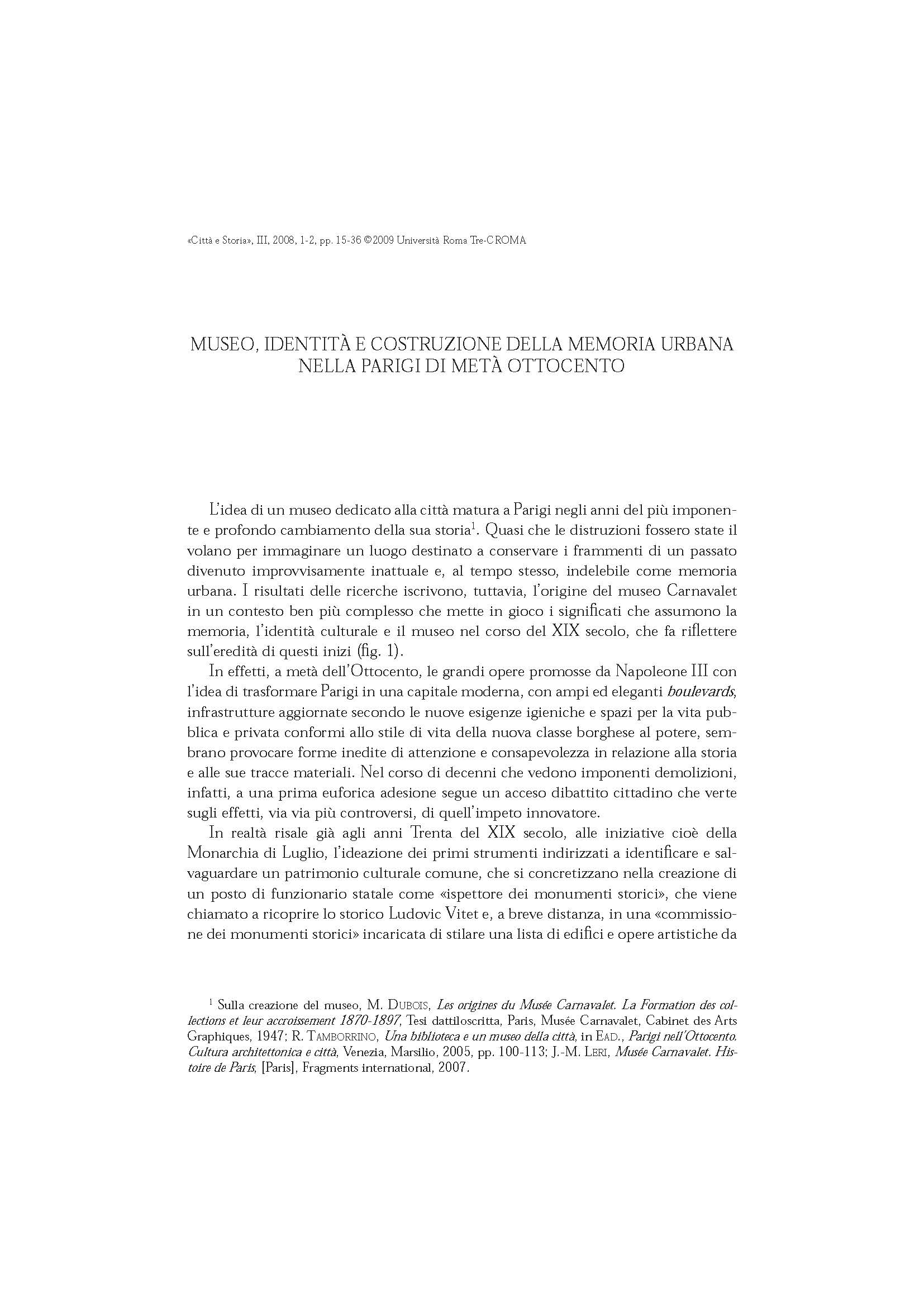Museo, identità e costruzione della memoria urbana nella Parigi di metà Ottocento
6,00 €
The idea of a museum dedicated to the city is notable in Paris for its unusual origins, which bind destruction and conservation in an exemplary fashion. During the mid-nineteenth century, in those years which saw the most imposing and far-reaching changes in its history, the great works instigated by Napoleon III with the aim of transforming Paris into a modern capital city caused destruction and left building sites. As well as the conservation of fragments and exhibits, research suggests that the founding of the Carnavalet museum was conceived in a more complex context, where memory, cultural identity and the museum itself took on particular importance in the course of the nineteenth century, not to mention the heritage that they bring to today’s museum.
The piles of rubble were transformed into archaeological excavation sites, where traces of the city’s ancient street plan were sought, and during this transformation, the need to document methods and timing arose, in the hope of tracing that dramatic epoch, with the help of the most modern tools available.
It is also a fact, however, that the museum of the city of Paris was created by the very people who promoted the demolition and reconstruction of the city on such a grand scale. Work on the Musée Carnavalet, which officially opened its doors to the public in 1898, began in 1865 and the events that led to the decision to found the museum can be traced back to at least the beginning of that decade. In order to understand the exact aims of the museum, the story of its display and setting is of fundamental importance. The purchase and restoration of the Hotel Carnavalet – a building of great architectural interest, but also the home of Madame de Sévigné, an illustrious figure in the history of that city – were undertaken at the same time as the idea for a city museum was being developed. Both events – the museum and the purchase of the building – were decisions made by Haussmann.
The exhibit took into account and exceeded other nineteenth century museum projects undertaken in Paris which had also been designed to represent specific subjects involving conservation trough urban memory and which had the final aim of educating the public. Finally, as if to corroborate its founding principles, the collections highlighted the importance of urban spaces and the modern city.
The idea of a museum dedicated to the city is notable in Paris for its unusual origins, which bind destruction and conservation in an exemplary fashion. During the mid-nineteenth century, in those years which saw the most imposing and far-reaching changes in its history, the great works instigated by Napoleon III with the aim of transforming Paris into a modern capital city caused destruction and left building sites. As well as the conservation of fragments and exhibits, research suggests that the founding of the Carnavalet museum was conceived in a more complex context, where memory, cultural identity and the museum itself took on particular importance in the course of the nineteenth century, not to mention the heritage that they bring to today’s museum.
The piles of rubble were transformed into archaeological excavation sites, where traces of the city’s ancient street plan were sought, and during this transformation, the need to document methods and timing arose, in the hope of tracing that dramatic epoch, with the help of the most modern tools available.
It is also a fact, however, that the museum of the city of Paris was created by the very people who promoted the demolition and reconstruction of the city on such a grand scale. Work on the Musée Carnavalet, which officially opened its doors to the public in 1898, began in 1865 and the events that led to the decision to found the museum can be traced back to at least the beginning of that decade. In order to understand the exact aims of the museum, the story of its display and setting is of fundamental importance. The purchase and restoration of the Hotel Carnavalet – a building of great architectural interest, but also the home of Madame de Sévigné, an illustrious figure in the history of that city – were undertaken at the same time as the idea for a city museum was being developed. Both events – the museum and the purchase of the building – were decisions made by Haussmann.
The exhibit took into account and exceeded other nineteenth century museum projects undertaken in Paris which had also been designed to represent specific subjects involving conservation trough urban memory and which had the final aim of educating the public. Finally, as if to corroborate its founding principles, the collections highlighted the importance of urban spaces and the modern city.

